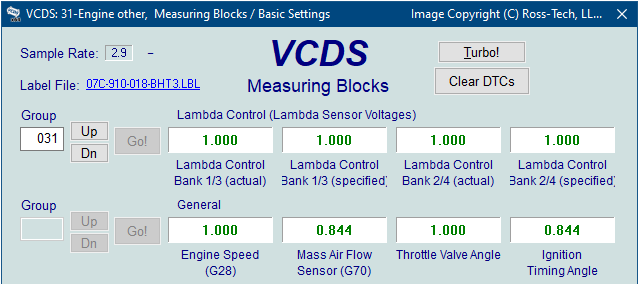

So with this test you can check whatever you need on this control loop for basic troubleshooting. If you hook up a vacuum gauge to the N75 output to the vane actuator it should change from about 2" hg vacuum (or less) to about 20" hg vacuum (or more). You can hear a definite sound change in the exhaust - very noticeable. The turbo vane actuator should cycle up and down about 11-14 mm (depends upon turbo - others may have different travel) and it should pull up firmly onto the full travel stop set screw. I would say that most PD engines with stock turbos change about 150 mbar from min boost to max boost at 1400 rpm.


(less change will probably occur with a larger than stock turbo.) If the engine accelerates to 1400 rpm (as the PD engines do that I am familiar with) then the MAP should change by at least 80 mbar. The MAP actual pressure should cycle at least 30 mbar with a stock turbo if the test is done at idle - as the ALH engines do. (about 10% duty cycle to about 90% duty cycle.) The N75 duty cycle will cycle from OFF to ON every 5 seconds or so. You can even do an output test on your instrument cluster, give it a whirl and see what happens (it is safe to do).Ĭhoose GROUP 011 (or turbo controls from the pull-down menu)Ĭhoose GRAPH if you want, or just watch the numbers. Keep in mind that what it does will vary depending on the control module you are working with. If you use up the 1 minute on a given plan, or go though to the end of the output test plan, you must exit the ECM and restart the engine for a few seconds before you can do an output test again.īefore you even take anything apart, just give it a try and listed under the hook, you will hear some things clicking, everyone should try it out just to get an idea of what the output test function does.Each time you skip to the next test plan, that 1 minute time resets.There is nothing to fear, if a test is not the one you want, skip to the next one until you get to the N75. Turn ignition back on but do not start engine. Start the engine and let it run for a few seconds, then shut engine off.


 0 kommentar(er)
0 kommentar(er)
